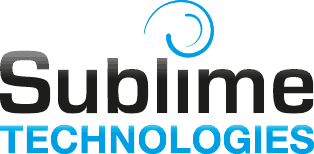Heat Mapping Cameras for Retailers
Retailers have traditionally used in-store cameras to protect inventory, prevent loss and provide evidence in the event of shoplifting or robbery, but new technology is adding another dimension to surveillance. Heat mapping has made its way into the retail sector, giving companies new ways to monitor and track consumer behavior.
Video for Brick-and-Mortar Analytics
You understand how important customer data is for sales. Unless you know what people are buying, how much they’re willing to pay and what influences their choices, it’s hard to create a successful marketing strategy.
When compared to in-store analysis, breaking down and interpreting consumer information online is easy. Tracking clicks from various campaigns shows which tactics drive the majority of traffic, and order information links up with inventory to highlight the most popular products. Page views round out the picture with concrete numbers representing consumer interest.
Getting the same data from in-store traffic used to be an arduous process requiring employees to spend hours monitoring and surveying. Thanks to heat mapping, the same information you obtain online can now be collected in a retail setting.
How Heat Mapping Works
Similar to an infrared camera, heat mapping tracks customer movements throughout a store and delivers the data in the form of a map showing “hot” and “cold” spots. Areas appearing as orange, red or pink indicate high traffic. Blue and green represent spaces where customers spend little time. These colors are the result of accumulated body heat and are so accurate, it’s possible to tell which individual items in a display or on a table are the most popular.
Heat mapping software integrates with security systems and CCTV cameras to deliver this detailed information. Powerful and sensitive, this software gives a clear picture of which displays attract the most attention, the items with which customers interact most often and areas where activity is lacking.
Benefits of Mapping Consumer Behavior
If you sit and watch people shop, it can be easy to assume no patterns of movement exist. Unless a new product has just been released or a store is having a special in a particular department, consumer movements appear random and even chaotic.
Retailers have attempted to find a method in the madness by having employees monitor customers, take notes and report on the results. Relying on this data is risky in several ways, not the least of which being the potential for alienating customers when they realize they’re being watched. Even the most astute employees aren’t capable of putting together the kind of comprehensive picture you get from a heat map, and the painstaking process of collection and analysis takes so long, you won’t likely be able to make changes fast enough to benefit from the findings.
Heat mapping eliminates the “creepy employee” factor and increases the amount of detail you can collect about your customer base. When you can see which displays and items attract the most attention, where customers linger without actually buying anything and how the flow of foot traffic tends to move through the store, it’s possible to make quick adjustments to better serve shoppers.
Where Heat Maps Fall Short
Large stores face particular challenges when working to integrate heat mapping into marketing strategies. Trying to cover the entire retail floor with strategically placed security cameras isn’t always possible, and the missing data could skew results. An excessive number of cameras may be distracting to consumers or make them feel uncomfortable as they shop, so it’s essential to balance discernment with data collection if you’re dealing with a big space.
“Hot spots” unrelated to shopping behavior within the store can also present a false picture of where customers spend the most time. These may be created by clearance bins, areas dedicated to special events, displays set up with samples or a space where an employee was lingering while answering customers’ questions. As with any type of analytics, you need more than heat mapping on its own to understand the information being collected.
Improving Sales with Heat Map Data
To compensate for the limitations of heat mapping, retailers are using a combination of mapping and surveillance technologies to collect the widest pool of data possible. Monitoring the two together allows you to see:
- The ages and genders of consumers interested in certain products
- Consumer reactions to products and displays
- How shoppers respond to signage
- Where store layout may be hindering the shopping experience
Take this data and cross-reference it with inventory and point-of-sale information to determine which “hot spot” products are actually selling versus those consumers are looking at but leaving behind. Popular but “abandoned” items may indicate a poor pricing strategy or the need to stock more of a certain size or color.
In some cases, simply moving a display to a different part of the store may be enough to increase sales. This is akin to improving website navigation. The easier it is for customers to find what they want, the smoother the journey through the retail sales funnel.
Embracing New Technology
Changing consumer habits are causing e-commerce sale growth to far outpace that of retail. The LA Times reported a 15.8 percent jump in online sales in the second quarter of 2016. During the same period, retail sales increased only 2.3 percent. Although it’s possible to expand your business into the e-commerce realm or grow your existing online presence, traditional retail sales are still important to your bottom line.
This is where heat mapping comes in. Upgrading surveillance equipment to include this novel form of consumer analytics makes it possible to quickly adapt your brick-and-mortar store in the same way you adjust online campaigns to consumer behaviors. It’s time to embrace this wave of the future, and Sublime Technologies can help.
Since 2006, Sublime Technologies has been installing and updating high-quality security monitoring for businesses. Contact Sublime today to see how CCTV cameras integrated with emerging technology can change the way customer behavior influences your business.
